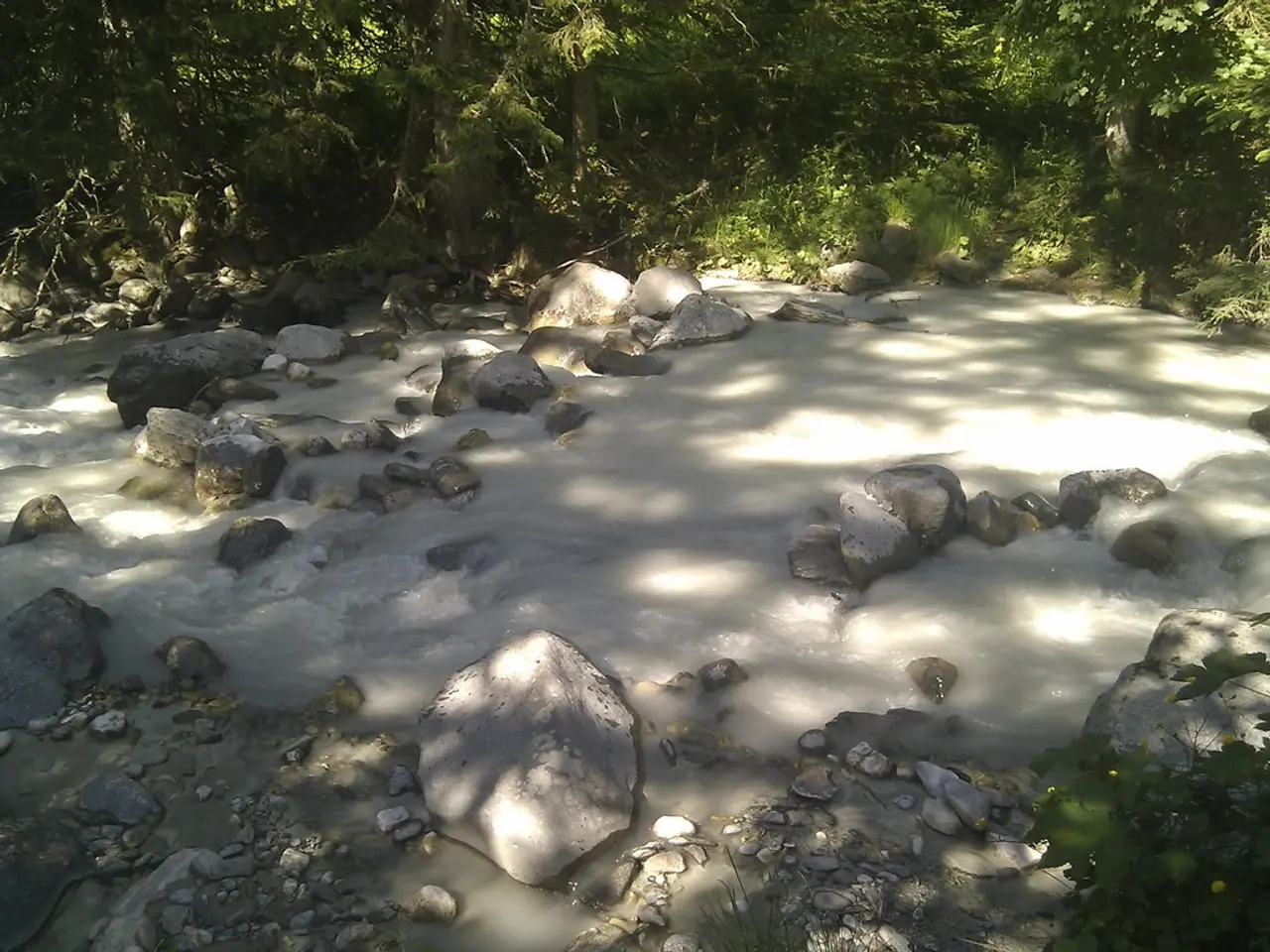Connection between ancient Earth's chemistry and contemporary biochemistry revealed in eight studies
In the ongoing quest to understand the origins of life, researchers are delving deep into the realm of biochemical evolution. They are exploring the intricate dance between organisms and their environment, taking into account the geochemical and atmospheric conditions of the early Earth [1].
The goal is to trace the evolutionary path of simple molecules from the primitive Earth to the complex structures necessary for life. However, despite their best efforts, the researchers have found that their models fall short in comprehensively reproducing the molecules used in modern biochemical processes [2].
Undeterred, they turned to the Kyoto Encyclopedia of Genes and Genomes (KEGG) database to power their simulations, allowing them to explore a wide range of chemical reactions that could have taken place [3]. By including a key precursor in their simulations, they found that only eight new biochemical reactions were necessary to link primitive geochemistry to modern biochemistry [4].
This discovery reinforces the idea that the chemical basis of life could have emerged relatively easily from the conditions present on the early Earth. However, the lack of direct evidence on the transition from early geochemistry to modern biochemistry remains a major challenge in this field [5].
One approach researchers use is computer modeling to simulate conditions on early Earth and study chemical reactions that may have led to the emergence of life. These models replicate environmental factors and chemical processes to reveal pathways for the spontaneous formation of life's building blocks, such as amino acids and protocells [6].
For instance, models inspired by the Miller-Urey experiment recreate primordial Earth atmospheric conditions, showing that amino acids and more complex organic molecules can form spontaneously from simple gases under energy sources such as lightning. This supports the hypothesis that life's molecular precursors could arise naturally from non-living matter [7].
Advanced computational frameworks also explore the feasibility of protocell self-assembly within Earth's early history. Modeling reveals that protocell emergence requires certain biases (like compartments or autocatalytic cycles), persistent information retention, and protection of functional molecules, indicating that some prebiotic informational structures must exist before Darwinian evolution can proceed [8].
Moreover, high-performance simulations of Earth's core dynamics demonstrate how the planet's magnetic field could have existed billions of years ago, providing the necessary radiation shield for delicate prebiotic chemical processes to occur on the surface. This underlines how geophysical models contribute contextual understanding of the conditions that allowed complex molecules to survive and develop toward life [1][5].
Together, these computer models offer a detailed, quantitative framework to study the stepwise chemical evolution from simple inorganic molecules to complex, self-replicating systems, providing insights that guide both theoretical and experimental research into life's origins on Earth. The research encourages further exploration of the interactions between geochemistry and biochemistry to better understand the origins of life on our planet [9].
The big mystery scientists are trying to solve is how simple chemicals evolved to form the complex molecules needed for life, such as DNA and proteins. This research brings us one step closer to unraveling this mystery and shedding light on the intricate dance between chemistry and biology that led to the emergence of life on Earth.
- As the scientific community delves deeper into the study of biological evolution, they are also exploring how technology can aid their research, particularly in understanding medical conditions and environmental factors that impact life.
- The ongoing investigation into the origins of life has revealed that advancements in computer modeling technology have significantly bolstered researchers' ability to simulate environmental factors and chemical processes on early Earth, potentially offering insights into the emergence of life's building blocks.
- Despite significant breakthroughs in our understanding of the chemistry that could have led to life on Earth, researchers acknowledge the urgent need for further research and technological advancements in the field of medical conditions, as well as continued study of the intricate relationship between geochemistry and biochemistry.




